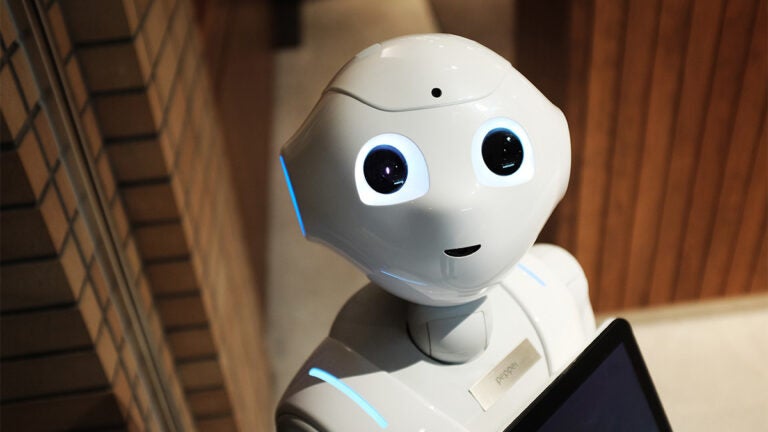
(Photo/Alex Knight via Pexels)
USC’s Biggest Wins in Advanced Computing
From quantum computing to robotics to machine learning, these breakthroughs established USC on the frontiers of computing.
USC has been an animating force driving computing research forward since the late 1960s.
With the advent of the USC Information Sciences Institute (ISI) in 1972 and the Department of Computer Science in 1976 (born out of the Ming Hsieh Department of Electrical and Computer Engineering), USC has played a propulsive role in tech, from the internet to the Oculus Rift to recent Nobel Prizes.
1982 The .com

While working at ISI, Paul Mockapetris and Jon Postel pioneered the Domain Name System (DNS), which introduced the .com, .edu, .gov and .org internet naming standards in 1983.
The DNS works like a phone book for the internet, automatically translating text names, which are easy for humans to understand and remember, to numerical addresses that computers need. For example, imagine trying to remember an IP address like “192.0.2.118” instead of simply “usc.edu.”
In a 2009 NPR interview, Mockapetris said the first domain name he ever created was “isi.edu” for his employer, the USC Information Sciences Institute—and it is still in use today.
As Wired Magazine noted on the 25th anniversary of DNS, “Without the [DNS], it’s doubtful the internet could have grown and flourished as it has.”
1994 DNA Computing
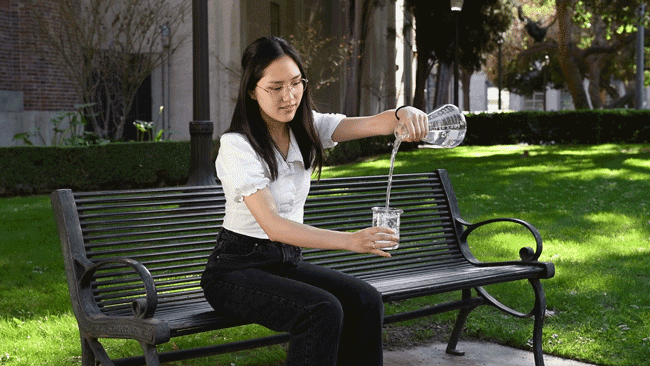
In 1994, Professor Leonard Adleman, who coined the term “computer virus,” invented DNA computing, which involves performing computations using biological molecules rather than traditional silicon chips.
Adleman — who received the 2002 Turing Award, often called the Nobel Prize of computer science — saw that a computer could be something other than a machine using electrical impulses. After visiting a USC biology lab in 1993, he recognized that the 0s and 1s of conventional computers could be replaced with the four DNA bases: A, C, G and T. As he later wrote, a “liquid computer” can exist in which interacting molecules perform computations.
“We’ve shown by these computations that biological molecules can be used for distinctly non-biological purposes,” Adleman said in 2002. “They are miraculous little machines. They store energy and information, they cut, paste and copy.”
2005 Socially Assistive Robotics
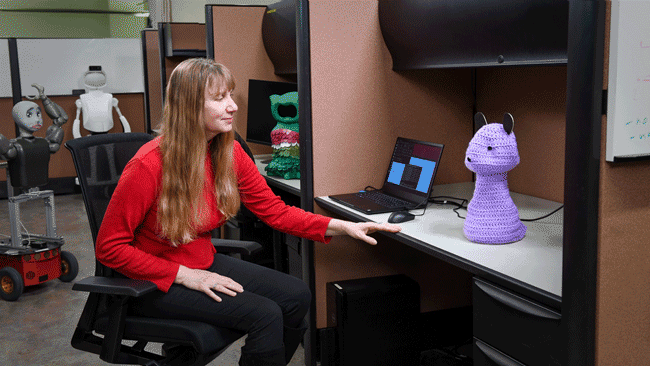
Socially assistive robotics is a new field that focuses on providing social support so people can overcome challenges in health, wellness, education and training. Pioneered in the USC Interaction Lab led by Maja Matarić, socially assistive robots have been developed for a broad range of user communities, including infants with movement delays, children with autism, stroke patients, people with dementia and Alzheimer’s disease, and otherwise healthy elderly people.
“We want these robots to make the user happier, more capable and better able to help themselves,” said Matarić, the Chan Soon-Shiong Chair and Distinguished Professor of Computer Science, Neuroscience and Pediatrics at USC. “We also want them to help teachers and therapists, not remove their purpose.”
The field has inspired investments from federal funding agencies and technology startups. The assistive robotics market is estimated to reach $25.16 billion by 2028.
2012 Academia’s Only Quantum Computing System
Defined as “the ultimate disruptive technology,” quantum computing can crunch massive data and variables quickly, giving it the potential to do everything from optimizing batteries for electric cars, predicting weather and models for climate change, or creating the best possible investment portfolio.
Today, USC is the only university in the world to host and operate a commercial quantum computing system. Launched in 2012, the D-Wave One—the first commercial quantum processor—is located at the USC-Lockheed Martin Quantum Computing Center (QCC), led by USC Viterbi Professor of Engineering Daniel Lidar and ISI’s Robert F. Lucas.
Recently, QCC upgraded to D-Wave’s Advantage system, with more than 5,000 qubits, or a quantum bit, the basic unit of information in a quantum computer. Larger than any other quantum computer, the upgrades will enable QCC to run computations through the cloud—the first quantum cloud system in the United States.
2015 Speaking to the Past…in the Future
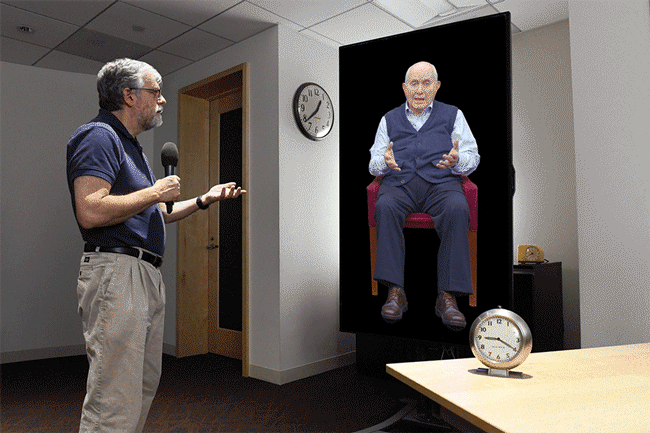
New Dimensions in Testimony, a collaboration between the USC Shoah Foundation and the USC Institute for Creative Technologies (ICT), in partnership with tech company Conscience Display, is an initiative to record and display testimony in a way that will continue the dialogue between Holocaust survivors and learners far into the future.
The project uses ICT’s Light Stage technology to record interviews using multiple high-end cameras for high-fidelity playback. The ICT Dialogue Group’s natural language technology allows fluent, open-ended conversation with the recordings. The result is a compelling and emotional interactive experience that enables viewers to ask questions and hear responses in real-time, lifelike conversation—even after the survivors have passed away.
New Dimensions in Testimony debuted in the Illinois Holocaust Museum & Education Center in 2015. Since then, more than 50 survivors and other witnesses have been recorded and presented in dozens of museums around the United States and the world. It remains a powerful application of Artificial Intelligence (AI) and graphics to preserve the stories and lived experiences of culturally and historically significant figures.
2016 AI for Good
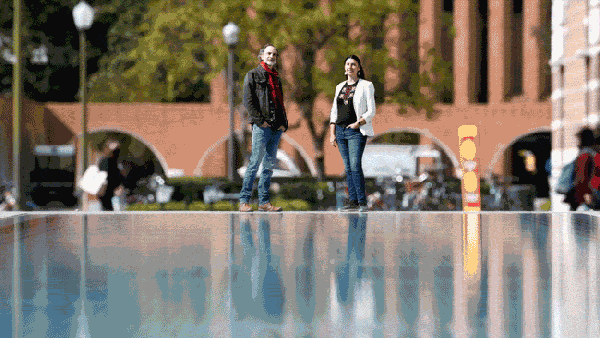
Launched in 2016, the Center for AI in Society (CAIS) became one of the pioneering “AI for Good” centers in the United States, uniting USC Viterbi and the USC Suzanne Dworak-Peck School of Social Work.
In the past, CAIS used AI to prevent the spread of HIV/AIDS among homeless youth. In fact, a pilot study demonstrated a 40% increase in homeless youth seeking HIV/AIDS testing due to an AI-assisted intervention. In 2019, the technology was also used as part of the largest global deployment of predictive AI to thwart poachers and protect endangered animals.
Today, CAIS fuses AI, social work and engineering in unique ways, such as working with the Los Angeles Homeless Service Authority to address homelessness; battling opioid addiction; mitigating disasters like heat waves, earthquakes and floods; and aiding the mental health of veterans.
2017 Fighting Modern Slavery
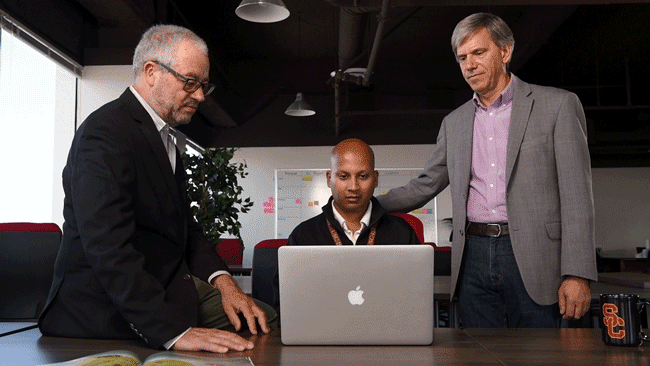
In 2017, a team of researchers at ISI led by Pedro Szekely, Mayank Kejriwal and Craig Knoblock created software called DIG that helps investigators scour the internet to identify possible sex traffickers and begin the process of capturing, charging and convicting them.
Law enforcement agencies across the country, including in New York City, have used DIG as well as other software programs spawned by Memex, a Defense Advanced Research Projects Agency (DARPA)-funded program aimed at developing internet search tools to help investigators thwart sex trafficking, among other illegal activities. The specialized software has triggered more than 300 investigations and helped secure 18 felony sex-trafficking convictions, according to Wade Shen, program manager in DARPA’s Information Innovation Office and Memex program leader. It has also helped free several victims.
In 2015, Manhattan District Attorney Cyrus R. Vance Jr. announced that DIG was being used in every human trafficking case brought by the DA’s office. “With technology like Memex,” he said, “we are better able to serve trafficking victims and build strong cases against their traffickers.”
“This is the most rewarding project I’ve ever worked on,” said Szekely. “It’s really made a difference.”



